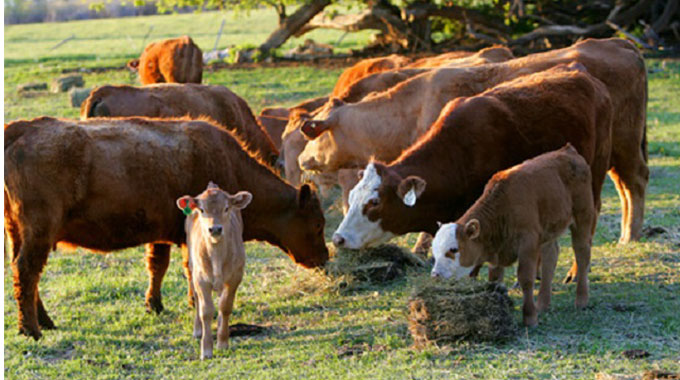
Mhlupheki Dube
AFTER having a conversation with some smallholder communal livestock farmers in various parts of the country, one common challenge that emerged is the shrinking of grazing lands due to human settlement.
More often than not, one gets complaints that traditional leaders are settling people on lands previously designated for grazing livestock. This interfering with the traditional rangeland management practices is done mostly by communal farmers. It is important to mention here that there are traditional rangeland management practices that communal livestock farmers have always followed.
It will be incorrect to pretend that communal livestock farmers have no rangeland management practice at all. Some of the traditional rangeland management practices include nomadic pastoralism which, however, is mainly practised by livestock farmers in east Africa and neighbouring regions.
Another practice is relief grazing (ukulagisa). This involves farmers driving their cattle to areas which are largely not habitat to human beings and hence the veld is always prolific. These are usually protected areas such as conservancies, forestry commission areas or just areas far away from human settlement. In this method farmers go and camp in those areas and have temporary cattle posts as leaving your animals unattended for a long time will make them fall prey to predators or thieves.
Strictly speaking this is not rangeland management but a coping mechanism because the relief grazing area does not belong to these farmers. The most common traditional rangeland management practice which is used by most communal farmers is what I will call seasonal grazing. This involves having two main zones for grazing the animals. One is for grazing during the rainy season while the other is for the dry season. Usually during the rainy season animals are grazed in between homesteads and fields because there is plenty grass while during the dry season, they are driven to the veld which is a bit far from fields and homesteads. Traditional leadership enforces compliance to this practice and there are heavy fines for not complying. It is this seasonal grazing rangeland management practice which is increasingly becoming difficult because some traditional leaders are settling people on lands designated for grazing.
This is mainly due to population pressure on the land. It is important to note that the first step towards adopting effective rangeland management systems is having planned human settlement.
This is the direction the country should take as land is a finite resource which means careful planning is needed as the population continues to expand. The first step in my view is to disabuse ourselves from the notion and thinking that planned settlement is for resettlement areas only, communal areas is a free for all haphazard zone.
Communal areas hold the largest numbers of our human populations and livestock and hence this is the area that needs human settlement planning. Admittedly the damage has already been done in most of these areas but it is important that we plan our settlement for the little remaining patches of land in the communal areas. We may not be able to do anything about the existing human settlement but we certainly can do something with new ones.
There will never be a human settlement in rural settings with no livestock hence it is paramount that we consider allocating grazing land for animals. Even if it means cramping human settlements together to create space for grazing let us do it for the benefit of future generations who may not have the luxury of patching their homestead anywhere anyhow.
It should be engrained in our minds that properly planned human settlement is the first step towards rangeland management.
I am aware that human settlement planning has always been premised on provision of social amenities and much less as a veld management principle. It is about time planned settlement is pushed as a foundation or precursor to veld management not only on the basis of human social amenities.
I am very convinced that with a little more effort in planning settlements in some communal areas, grazing space can be created for their livestock and even paddocks established. Human settlement planning as an enabler for rangeland management needs to be institutionalised in the department of lands and the local authority offices such that whenever there are plans relating to human settlement, due attention is given to the grazing land component of the plan. It can be done, it just needs the will to do it.
Uyabonga umntakaMaKhumalo.
Feedback [email protected]/ cell 0772851275.
